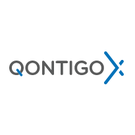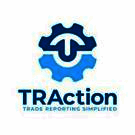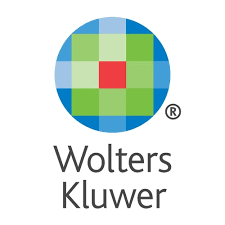Yes, most regulatory reporting software is intended to be available from numerous devices and platforms. This enables customers to access and use the program on a variety of devices, including laptops, tablets, and smartphones, as well as operating systems like Windows, Mac, and Android. This flexibility increases the software's accessibility and usability, making it easier for enterprises to meet regulatory reporting obligations.
List of Best Regulatory Reporting Software
A AIFMD Annex IV reporting software - the leading solution in the market! A software simplifies the AIF and AIFM AIFMD reports, saving you significant costs on annual regulatory reporting. With easy data input and frequent data reuse, compiling subse...Read More AIFMD Annex
Kyzer - your all-in-one solution for seamless data management and regulatory reporting. This innovative software simplifies the process by providing a centralized and secure web-based portal accessible through your banks intranet. Say goodbye to scat...Read More Kyzer
MAP FinTech offers a user-friendly solution for converting, upgrading, and re-formatting data to ensure smooth submission. Its automated workflows ensure accuracy and thorough examination of findings. The software can easily adapt to changes in diffe...Read More MAP FinTech
Regnology is a global RegTech Factory that revolutionizes the reporting processes for banks and financial institutions. Our advanced digital platform enables streamlined and automated operations, leading to significant cost savings. With the current...Read More Regnology
Qontigo offers customizable solutions, leveraging investment intelligence to drive long-term, profitable outcomes for clients. Our expertise, innovative technology, and dedication to client success position us as a frontrunner in providing scalable s...Read More Qontigo
Broadridge Revenue and Expense Management, a platform designed to streamline financial processes and provide comprehensive tracking and reporting of both revenues and expenses. This innovative solution promotes transparency and boosts operational eff...Read More Broadridge Revenue and Expense Management
Productioneer is the leading production management software for the oil and gas industry. Streamline data acquisition and analysis, and conquer complex challenges with ease. Empower your team with valuable insights and make informed decisions for hig...Read More Productioneer
Vena is solution for budgeting, planning, and forecasting needs. It offers seamless integration with Excel and advanced reporting capabilities to effectively manage business data. With Vena, businesses can streamline operations with a comprehensive d...Read More Vena
crlHorizon is a risk and compliance management solution for Salesforce. Seamlessly integrated with Salesforce, crlHorizon offers automated approvals and real-time monitoring to streamline the compliance process. With its comprehensive oversight and p...Read More crlHorizon
Point Nine - software solution that streamlines regulatory reporting for businesses. Easily meet reporting standards by effortlessly sending accurate data to trade repositories, recognized reporting channels, and national competent authorities. With...Read More Point Nine
TRAction: solution for seamless trade repository management. This software collects, verifies, and formats all your data to meet the unique requirements of your preferred repository. From handling registration and cost monitoring, to conducting thoro...Read More TRAction
CoreFiling - the reliable and go-to source for regulators, governments, financial institutions, and filers. Our powerful financial data aggregation app, True North®, offers the most extensive collection of public company data, including SEC and Co...Read More CoreFiling
OneSumX, a top-notch Financial Risk Management solution, is ideal for startups and agencies. It provides a comprehensive range of features such as portfolio modeling, risk analytics, market risk management, credit risk management, and portfolio manag...Read More OneSumX
Learn More About Regulatory Reporting Software
- What Is Regulatory Reporting Software?
- What Are The Recent Trends In Regulatory Reporting Software?
- Benefits Of Using Regulatory Reporting Software
- Important Factors To Consider While Purchasing Regulatory Reporting Software?
- What Are The Key Features To Look For In Regulatory Reporting Software?
- Why Do Businesses Need Regulatory Reporting Software?
- How Much Time Is Required To Implement Regulatory Reporting Software?
- What Is The Level Of Customization Available In Regulatory Reporting Software?
- Which Industries Can Benefit The Most From Regulatory Reporting Software?
- Conclusion
What Is Regulatory Reporting Software?
Regulatory reporting software is a specialist application that assists firms in meeting a variety of government rules and reporting obligations. This type of software automates the collection, organization, and submission of data to regulatory agencies, thereby expediting the reporting process and lowering the chance of errors.
One of the primary characteristics of regulatory reporting software is its ability to interact with a variety of data sources, including financial systems, customer databases, and supply chain data. This enables efficient and reliable data collecting, minimizing the need for manual data entry and lowering the possibility of human error. Another key feature of regulatory reporting software is its capacity to assure compliance with ever-changing requirements.
These solutions provide built-in regulatory updates and notifications, ensuring that organizations remain compliant with the newest standards. Furthermore, many regulatory reporting software solutions provide customized reporting templates, enabling firms to modify their reports to specific regulatory requirements. This not only saves time, but also assures that reports are consistent and accurate.
In addition to compliance and efficiency, regulatory reporting software supports comprehensive data analysis and visualization. This enables firms to derive important insights from their data, identify potential dangers or difficulties, and make better decisions. When contemplating investing in regulatory reporting software, it is critical to select one that is tailored to your sector and jurisdiction.
This ensures that all applicable regulations and criteria are met, and that the software can properly support your business operations. Overall, regulatory reporting software is a critical tool for organizations that operate in regulated industries. It streamlines reporting processes, ensures compliance, and provides important data insights, eventually boosting corporate growth and success.
What Are The Recent Trends In Regulatory Reporting Software?
The world of regulatory reporting is always changing, and regulatory reporting software is no exception. In recent years, we've seen a number of trends arise in this market that are influencing how firms approach compliance reporting.
Here are some of the major trends to bear in mind while selecting regulatory reporting software for your company:
1. Automation To Improve Accuracy And Efficiency: One of the most significant changes in regulatory reporting software has been the move toward automation. This trend is motivated by the requirement for increased reporting accuracy and efficiency. By automating the process, firms may lower the chance of human error while also saving time and costs. This means that software solutions increasingly include functions like data validation and reconciliation, allowing businesses to be more confident in the integrity of their reports.
2. Real-Time Reporting: With the advancement of technology and big data, the demand for real-time reporting has skyrocketed. This means that firms now need regulatory reporting software that can keep them up to speed on their compliance status. Real-time reporting also enables businesses to recognize and address any issues that may occur quickly, hence reducing possible risks.
3. Integration And Compatibility: Another significant trend in regulatory reporting software is the requirement for integration and compatibility with other systems. Organizations employ a range of software and tools to handle various elements of their business, so regulatory reporting software must be able to interact easily with them. This not only increases efficiency, but also provides a more comprehensive perspective of compliance across the firm.
4. Adoption Of Cloud-Based Solutions: In recent years, cloud-based solutions have grown in popularity, and this trend has now spread to regulatory reporting software. These solutions have numerous benefits, including accessibility, scalability, and cost-effectiveness. Companies may access their compliance data from anywhere, at any time, thanks to the cloud's safe storage.
5. Increased Data Protection Focus: As a result of multiple high-profile data breaches and cybersecurity concerns, regulatory reporting software now places a larger emphasis on data protection. To protect sensitive data, technologies such as encryption, multi-factor authentication, and tight access controls are included. To avoid potential data breaches, companies must ensure that the software they use is consistent with industry standards and regulations.
Benefits Of Using Regulatory Reporting Software
Regulatory reporting software is an essential tool for businesses of all sizes, allowing them to correctly and efficiently handle their regulatory reporting needs. With constantly changing regulations and more scrutiny from regulatory authorities, employing specialized software can assist your firm in a variety of ways.
1. Streamlined Procedure: The primary benefit of employing regulatory reporting software is the simplification of the reporting procedure. This program automates the entire process, removing the need for manual data entry and lowering the risk of human error. This leads to faster and more accurate reporting, saving your team time and resources.
2. Compliance Management: Meeting regulatory obligations is critical for any firm. Noncompliance might result in significant fines and reputational damage. Regulatory reporting software includes significant compliance management tools to keep your firm up to speed with the newest requirements.
3. Customizable Reports: The software enables you to build reports that are tailored to the specific demands of your business. This flexibility enables you to focus on the indicators that are most essential to your organization, delivering useful insights that can be used to make decisions.
4. Audit Trail: Regulatory reporting software maintains a comprehensive audit trail of all operations and changes made to reports. This tool promotes openness and accountability, allowing you to track and monitor any modifications made to the reports.
5. Data Security: With sensitive financial and operational data being transferred, firms must prioritize data security. Regulatory reporting software is packed with advanced security safeguards that protect your data and ensure compliance with data privacy rules.
6. Real-Time Monitoring: Regulatory reporting software provides a full view of your organization's compliance status. This allows you to recognize possible difficulties and take remedial action before they escalate into serious ones.
7. Cost Savings: Automating your regulatory reporting process allows you to drastically minimize the costs associated with manual reporting. This program also reduces the need for additional workers, which saves your business money in the long term.
Important Factors To Consider While Purchasing Regulatory Reporting Software?
When it comes to choosing regulatory reporting software, there are numerous critical elements to consider. These variables can include software functionality and features, as well as the provider's reputation and customer support.
To make the greatest option for your firm, here are some critical aspects to bear in mind when shopping for regulatory reporting software:
1. Regulation Compliance: Regulatory reporting software is primarily designed to assist organizations in meeting regulatory standards. As a result, it is critical to ensure that the software you use is particularly developed to meet the norms and standards applicable to your business. This will save you time and lower the likelihood of compliance issues.
2. Automation And Efficiency: Manual reporting methods are time-consuming and error-prone. Look for tools that can automate tasks such as data extraction and report preparation. This will save you time and increase the accuracy of your reports.
3. Integration With Existing Systems: Regulatory reporting software should work seamlessly alongside your existing systems, such as accounting or enterprise resource planning (ERP) software. This provides continuous data flow and removes the need for human data entry, which reduces the possibility of errors.
4. Customization Options: Each organization has distinct reporting needs, and the software you choose should be able to meet them. Look for software that allows you to customize reports, templates, and workflows so that it meets your individual requirements.
5. Audit Trail: In the event of a compliance audit or inquiry, it is vital to maintain a complete record of the data utilized to generate reports. Make sure the software you choose includes an audit trail capability, which logs all data changes and gives a clear audit trail for each report.
6. Security And Data Privacy: Because regulatory reporting contains sensitive data, the software you use should have strong security measures in place to safeguard the confidentiality, integrity, and availability of your information. In order to avoid legal concerns, the software should also comply with data protection regulations such as GDPR or CCPA.
7. User-Friendly Interface: The program should have a simple and intuitive interface that your staff can easily explore and use. This will shorten the learning curve while increasing user adoption.
8. Reputation And Customer Support: Before making a purchase, look into the provider's market reputation, read reviews, and contact their customer support. A dependable and recognized company will provide prompt customer service in the event of any problems or questions.
What Are The Key Features To Look For In Regulatory Reporting Software?
When it comes to selecting the best regulatory reporting software, there are a few crucial aspects that all buyers should consider. These capabilities will not only help assure regulatory compliance, but will also help enterprises of all sizes expedite their reporting processes.
Here are the most important things to consider while considering regulatory reporting software:
1. Data Management: Look for software that has strong data management features, such as the ability to import, gather, and combine data from several sources. This will save time and prevent errors by removing the need for human data entry.
2. Customizable Templates: Regulations differ from industry to industry, and even country to country. A decent regulatory reporting software should include adjustable templates that may be adjusted to your organization's unique reporting requirements.
3. Automation: Automating the reporting process saves time and reduces the likelihood of errors. Look for software that has automatic data validation, alarms for missing or wrong data, and automatic report preparation.
4. Real-Time Monitoring: With ever-changing rules, it is critical to have software that can monitor and alert you to any upgrades or changes that may influence your reporting. Look for software that provides real-time monitoring and alerts to regulatory changes.
5. Audit Trail: A detailed audit trail is required for compliance and transparency in the reporting process. Make sure the software logs all user actions and data changes, so you have a complete history of the reporting process.
6. Integration With Existing Systems: To eliminate data silos and streamline procedures, seek for software that integrates with your current systems, such as ERP, CRM, or finance software.
7. Security: Because regulatory reporting software deals with sensitive data, security is of the utmost importance. Look for software with strong security features like encryption, user access controls, and scheduled data backups.
When choosing regulatory reporting software, consider these critical characteristics to guarantee that your firm remains compliant and transparent in the reporting process. Select software that suits your specific reporting requirements and interacts smoothly with your existing systems to simplify your reporting process and save time and effort.
Why Do Businesses Need Regulatory Reporting Software?
Businesses operate in a complicated and constantly changing regulatory environment, with numerous rules and regulations that must be followed. Noncompliance can have serious implications, including as legal action, financial penalties, and reputational damage. Here's where regulatory reporting software comes in. Regulatory reporting software is a specialist technology that allows organizations to streamline and automate their regulatory reporting processes.
It enables businesses to ensure compliance with various rules and regulations, whether on a local, regional, or worldwide scale. This program streamlines the reporting process by collecting, organizing, and analyzing data from a variety of sources, including internal and external databases. The advantages to adopting regulatory reporting software are numerous.
For starters, it saves firms time and money by automating and standardizing reporting processes that were previously laborious. This ensures accuracy and increases efficiency, lowering the likelihood of errors and noncompliance. Second, regulatory reporting software enables organizations to monitor and track data in real time. This allows them to stay up to current on regulatory developments and alter their reporting methods as needed.
As a result, businesses may proactively detect and address compliance deficiencies before they turn into greater issues. Third, this software enables data centralization, ensuring that all regulatory reports are uniform and dependable. This is especially useful for international firms that must comply with several regulations and report in multiple jurisdictions.
Furthermore, regulatory reporting software includes built-in auditing and reporting facilities, allowing organizations to maintain a thorough audit trail for each report. This not only facilitates compliance audits, but also allows businesses to demonstrate their commitment to regulatory compliance. Furthermore, regulatory reporting software helps firms make better decisions by giving insights and statistics on their compliance performance. Companies can use this to identify potential hazards and opportunities for improvement, allowing them to make more informed decisions about their compliance initiatives.
How Much Time Is Required To Implement Regulatory Reporting Software?
The implementation time for regulatory reporting software varies depending on a number of factors, including the software's complexity, the organization's current systems, and the extent of customization necessary. However, on average, the implementation procedure can take between one and six months. A complete plan must be in place before the implementation phase can begin.
This entails determining your organization's specific regulatory reporting requirements, acquiring the necessary software, and forming a dedicated team to supervise implementation. The actual installation and configuration of the program usually take 2-4 weeks. During this phase, the software is installed on the organization's systems, and any necessary integrations with existing systems are completed.
The following step is testing and customisation, which can take another 2-4 weeks. This includes verifying the software's functionality and making any necessary changes to satisfy the organization's reporting needs. The training and onboarding process begins when the software has been properly configured and tested. This normally takes another 1-2 weeks, during which the organization's staff is taught on how to use the program effectively.
Overall, the implementation time for regulatory reporting software varies according to the size of the company, the product's complexity, and the level of customization necessary. A well-planned and coordinated approach is critical to ensuring a smooth and timely implementation process.
What Is The Level Of Customization Available In Regulatory Reporting Software?
Regulatory reporting software is a critical tool for businesses to guarantee compliance with their industry's constantly changing regulatory standards. One of the most significant elements to consider when choosing regulatory reporting software is the level of customization available. In this tutorial, we'll look at the many levels of customisation available in regulatory reporting software and how they might help your firm.
First and foremost, it is critical to recognize that the level of flexibility offered in regulatory reporting software differs from vendor to vendor. Depending on your unique requirements, some software may allow for minimal customization, while others may enable more advanced possibilities. At the most basic level, regulatory reporting software allows users to enter data and generate pre-defined reports.
This means that the software has a predefined set of templates and reports that cannot be modified. While this solution may be appropriate for smaller businesses with simpler reporting requirements, it may not fulfill the demands of larger organisations or those with more complex reporting duties. On the other hand, some regulatory reporting software provides extensive flexibility, allowing customers to modify reports and templates to their individual needs.
This includes the ability to generate custom reports, alter existing templates, and define individual data columns. With this level of personalization, businesses can ensure that their reports are accurate, relevant, and in accordance with industry requirements. Furthermore, certain regulatory reporting software supports integration with internal systems and databases, allowing for simple data transfer and modification.
This allows businesses to automate data gathering and report generation, reducing the possibility of human mistake while ensuring fast and accurate reporting. In addition to customization of report templates and data fields, certain regulatory reporting software provides freedom in data display. This implies that users can customize the charts, graphs, and tables that appear in their reports, making data analysis and interpretation easier.
Which Industries Can Benefit The Most From Regulatory Reporting Software?
Regulatory reporting software can be extremely beneficial to a variety of businesses, including banking, finance, healthcare, insurance, and manufacturing. These industries are heavily regulated and must comply with continuously changing and complex regulatory standards. In the banking and finance industry, regulatory reporting software can assist firms in complying with financial laws such as the Dodd-Frank Act, Basel III, and IFRS 9.
It can improve reporting efficiency, ensure compliance, and lower the risk of penalties and fines. Regulatory reporting software can help healthcare providers comply with rules like HIPAA and the Affordable Care Act. It can help streamline procedures such as claims administration and billing, increasing accuracy and lowering the risk of noncompliance.
For insurance firms, regulatory reporting software can help them meet reporting obligations for policies and claims while also assuring compliance with rules like Solvency II and FATCA. This can improve productivity and accuracy, resulting in improved customer service and lower risk. In the industrial industry, regulatory reporting software can assist with meeting safety and environmental regulations such as OSHA and EPA standards.
It can also help with supply chain management and tracking, as well as ensure product safety and traceability laws are followed. Regardless of the industry, regulatory reporting software can give useful insights and analytics, helping businesses to make educated decisions and proactively detect and handle possible compliance issues. With rules continuously changing, having a dependable and comprehensive regulatory reporting software may help firms stay compliant and avoid costly penalties.
Conclusion
Finally, when it comes to picking the best regulatory reporting software for your company, it is critical to thoroughly consider your individual requirements and goals. Before making a decision, take into account industry compliance standards, data security, convenience of use, and customization options. Our buyer's guide outlines crucial features and factors for assessing software solutions.
We hope this advice helps you make an informed and confident selection that best meets your company's needs. The appropriate software can help your organization streamline its regulatory reporting processes, ensure compliance, and reduce risks. With the knowledge and insights offered, you can easily navigate the market and select the finest regulatory reporting software for your company.
Regulatory Reporting Software FAQ's
Can Regulatory Reporting Software Be Accessed Across Multiple Devices And Platforms?
Is Regulatory Reporting Software Future-Proof And Adaptable To Emerging Technologies Like AI, Blockchain Or IoT?
Regulatory reporting software is continually improving in response to technological improvements. As a result, it is future-proof and adaptable to upcoming technologies like as artificial intelligence, blockchain, and the Internet of Things.
These software solutions are intended to interface with other systems and can be tailored to meet changing regulatory needs. This enables organizations to remain compliant while utilizing modern technologies to improve their reporting processes in an ever-changing regulatory world.
Is There A Free Trial Offered To Assess Regulatory Reporting Software Before Committing?
Yes, many regulatory reporting software companies provide a free trial period in which clients can evaluate the software before making a commitment. This enables clients to evaluate the software's features, interface, and functioning to assess whether it satisfies their requirements and is worth investing in. It is encouraged to use free trials to confirm that the software meets your regulatory reporting needs.
Does Regulatory Reporting Software Offer Data Security Features And Meet Regulatory Compliance Standards?
Yes, regulatory reporting software is intended to protect data and comply with regulatory criteria. It protects sensitive information with features like data encryption, access control, and audit trails. It also contains compliance templates and automatic reporting to help satisfy regulatory standards. Regulatory reporting software ensures the highest level of data security and compliance by providing regular updates and adhering strictly to industry requirements.
Can Regulatory Reporting Software Integrate Seamlessly With Existing Tools And Platforms?
Yes, regulatory reporting software is designed to work smoothly with existing tools and platforms. These software solutions are extremely flexible and may be adjusted to meet a company's exact goals and requirements using its existing systems. They use common data formats and reporting protocols, making it simple to combine with other systems. This interface enables a continuous flow of data, ensuring accuracy and efficiency in regulatory reporting processes.















